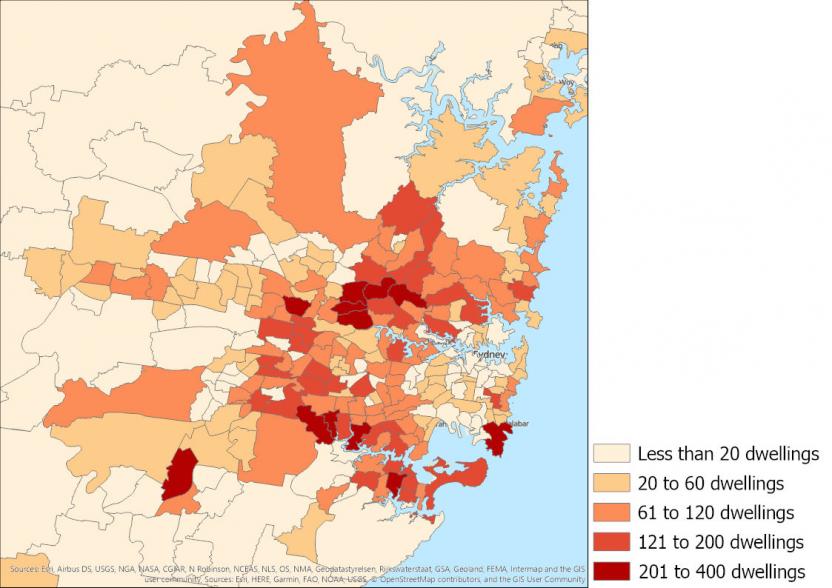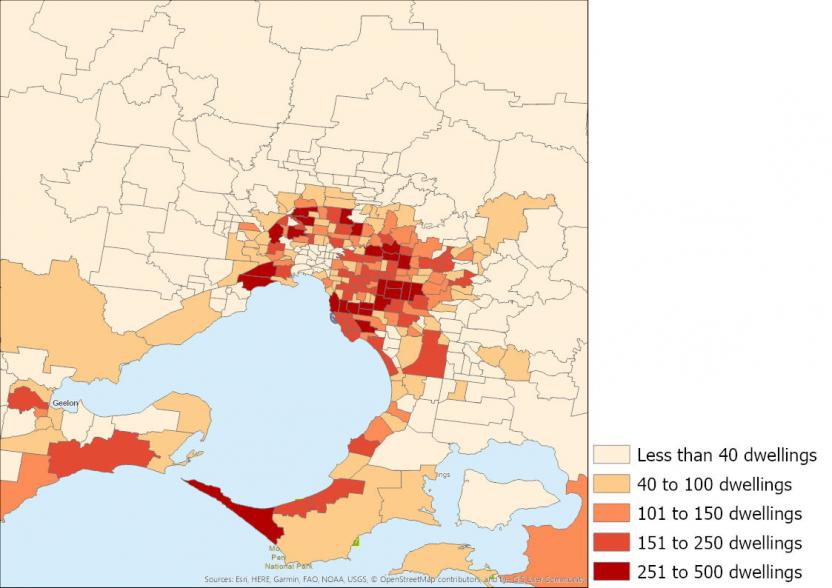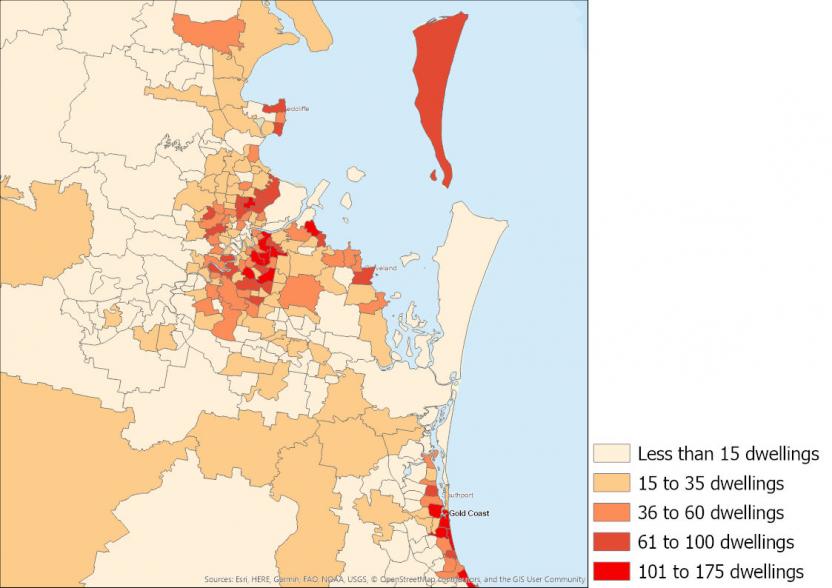- There were 61,562 dwelling demolitions approved in New South Wales, Victoria and Queensland between the March 2016 quarter and the December 2019 quarter.
- 59,403 dwelling demolitions approved were houses and 2,159 were other residential dwellings.
- Victoria had the highest number of dwelling demolitions approved in this time period (29,986 dwellings), followed by New South Wales (21,390 dwellings) and Queensland (10,186 dwellings).
- The ratio of dwelling demolitions approved to new dwellings approved was 1:9 in Victoria, 1:12 in New South Wales and 1:16 in Queensland.
The falls in the number of dwelling demolitions approved in New South Wales and Victoria from the September 2018 quarter were consistent with similar falls in new houses and new townhouses approved (refer Graph 2).
Across the three states between 2016 and 2019, the ratio of dwelling demolitions approved to new dwellings approved was 1:11. Demolition approvals are relatively low for two primary reasons: greenfield residential developments require little-to-no demolition activity, and low-density dwellings are often demolished to make way for medium- and high-density residential buildings.


